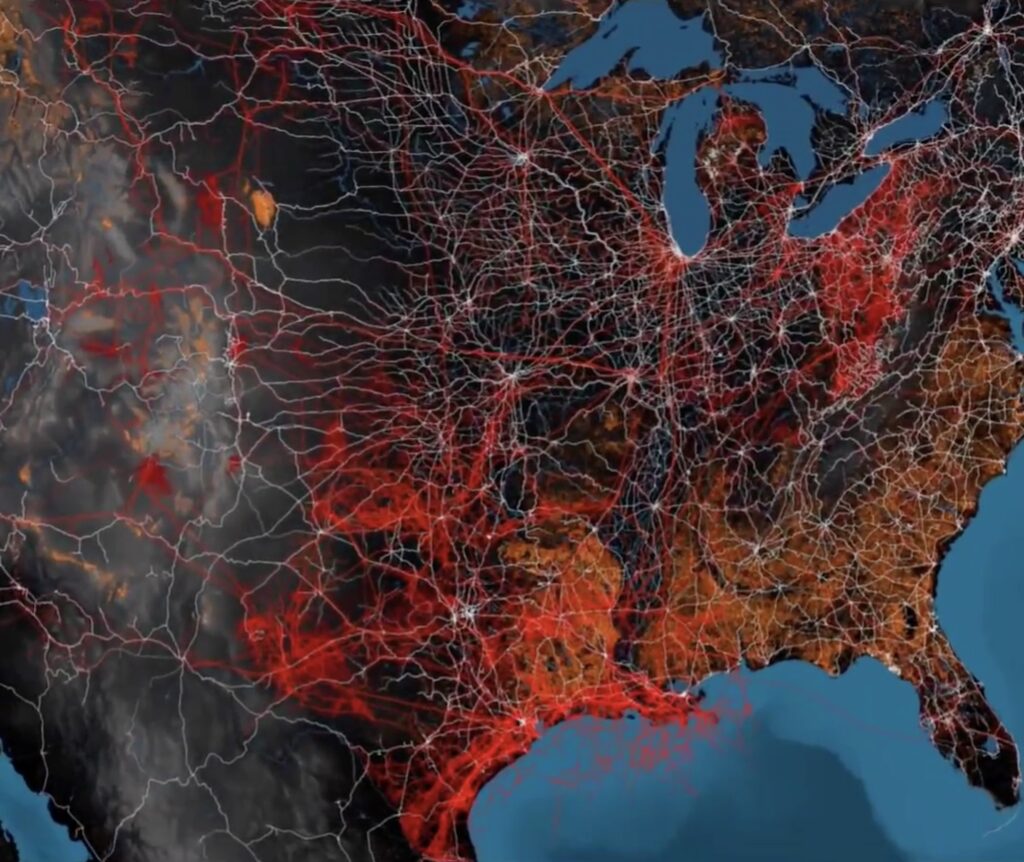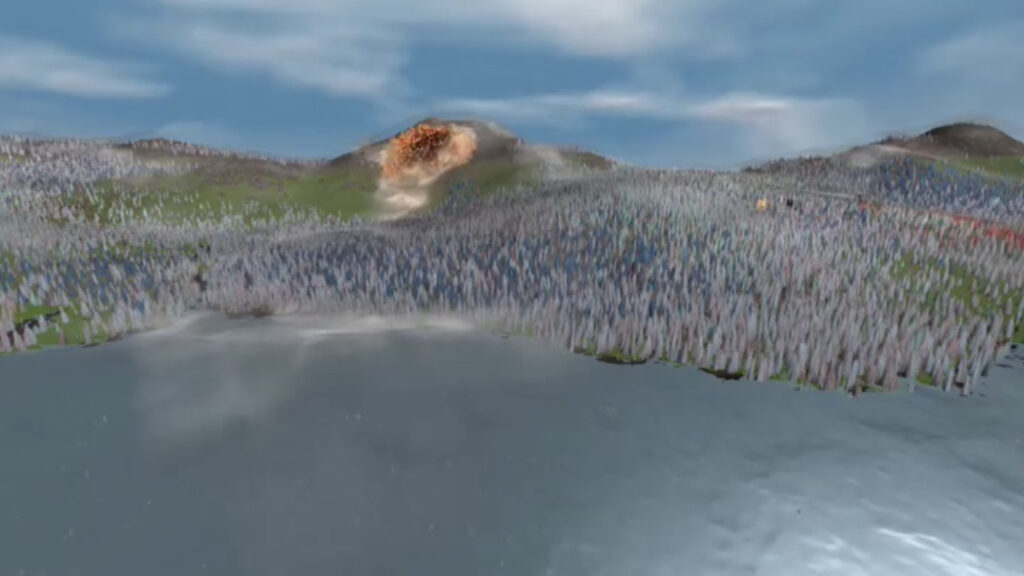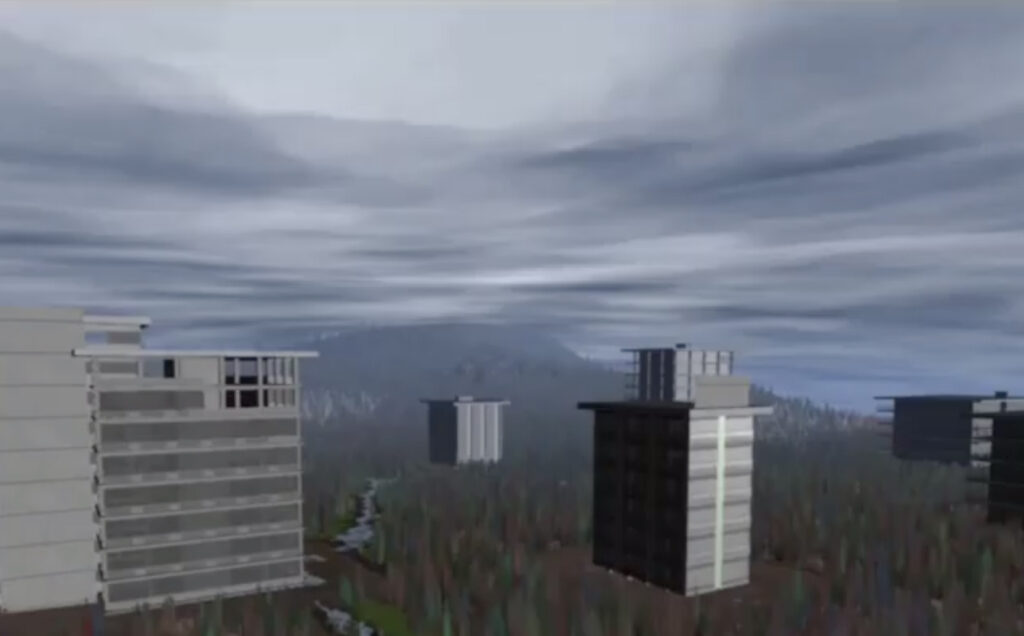nullTerra was created to visualize interconnected resource extraction systems across Canada and the US. Petroleum infrastructure and transportation networks are transnational in nature, spreading across the continent and into the ocean.
Data shown in this video depicts the cumulative footprint of railways, petroleum wells/pipelines as well as forestry operations across the continent. The second section shows offshore petroleum wells, pipelines, and oil tanker traffic on the Gulf Coast.
These industrial systems fragment waterways and forest ecosystems, impacting ecological resilience while also making our society dependent on this infrastructure. Especially evident in the Gulf of Mexico, pipeline corridors through wetlands, oil tanker traffic, and deep water offshore wells all have impacted the integrity of coastal ecosystems and communities.
“Globalization’s anti-resilience, or brittleness, results partly from the diminishing returns of economic efficiency. But it goes deeper. The lengthening of supply chains depends upon the availability of cheap transport, which in turn depends on cheap fuel.”
-Richard Heinberg, How Globalization Undermines Resilience, Think Resilience Course.
Join The List
Want to hear from us occasionally? Subscribe to our newsletter


